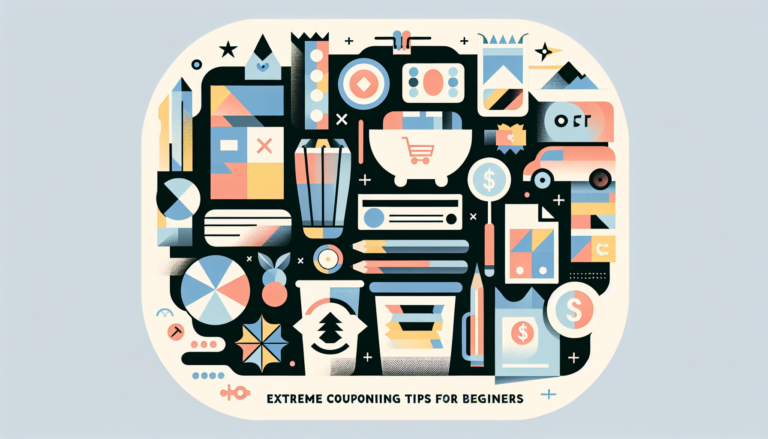Thriving Financially: Navigating the 50/30/20 Budget Allocation Rule
Understanding 50/30/20 Budgeting
Introduction to 50/30/20 Rule
The 50/30/20 budget system is a straightforward way to handle your money smartly. It suggests splitting up your after-tax income into three slices: needs (50%), wants (30%), and savings (20%) (NotchHR). This method aims to help you balance paying for the important stuff, enjoying life’s little pleasures, and setting some money aside for the future.
It’s not just about keeping your wallet healthy; it’s about letting folks breathe easy, knowing they won’t go broke because they splurged on new sneakers or forgot to save a few bucks for later. This one’s a keeper for many middle-class earners looking to spend wisely and stash some cash for rainy days.
Benefits of 50/30/20 Budgeting
Using the 50/30/20 budgeting system has lots of perks. It gives folks the reins on their financial reins and a sunnier view on their bucks. Here’s why it works like a charm:
| Benefit | Description |
|---|---|
| Raises Financial Savvy | This setup makes people aware of where their money goes and boosts their money smarts. |
| Boosts Savings | Stashing 20% of earnings away builds a rainy-day fund and gears you up for big plans. |
| Lowers Money Worries | Sorting out spending means less chance of scraping by each month, bringing peace of mind (NotchHR). |
| Adaptable Use | You can tweak the numbers to fit personal needs and monthly outgoings (Citizens Bank). |
This budgeting formula keeps spending, leisure, and financial safety in perfect harmony. Give it a whirl, and it might just turn your financial life around. Want more tips? Check out our pieces on the 50/30/20 budget rule and personal finance 50/30/20 rule.
Allocating Half to Needs
In the 50/30/20 budget plan, half of the cash you bring home after taxes is meant for must-haves, things you just can’t do without. This isn’t just a suggestion; it’s key to keeping your life rolling smoothly.
What’s a Need?
Needs are those things you simply can’t skip if you want to survive and live your day-to-day. The term covers the expenses you encounter to meet basic living standards and keep things ticking along nicely. As Citizens Bank highlights, it’s crucial these essentials hit around half of your post-tax income.
What Counts as a Must-Have
Check out some usual go-to’s in this must-have club:
| Must-Have Expense | What It’s All About |
|---|---|
| Rent or Mortgage | Regular roof-over-your-head payments, balancing interest, taxes, and those must-have insurances. |
| Utilities | Monthly charges keeping the lights on, water running, heat going, and internet buzzing. |
| Groceries | Basic pantry-stocking stuff you need for a decent plate. |
| Insurance Premiums | Health, car, and life insurance checks. |
| Minimum Debt Payments | The least required to dodge penalties on borrowed cash and credit cards. |
| Transportation Costs | Money for your commute—whether that’s bus fare or car-related bills. |
These needs glue together the structure of living a steady life and avoiding a financial tailspin. Sticking to this budget split is smart money management. Wanna know more about splitting your budget this way? Dive into our piece on the 50/30/20 budgeting system.
Distributing 30% to Wants
Using the 50/30/20 rule to manage finances, 30% of what you bring home gets the fun treatment—spent on things that aren’t necessities but do make life a whole lot sweeter.
Understanding Discretionary Spending
Wants are the cherry on top of your budget sundae—the things you don’t need but sure do enjoy. We’re talking about ventures that spice up life, like grabbing dinner out on the town or catching the latest blockbuster. According to that 50/30/20 guideline, this chunk is for those little luxuries: entertainment, dining, travel escapades, shopping sprees, and pampering yourself (Britannica).
By spotting what’s in the “wants” bucket, you get a better handle on where your cash should flow, raising awareness about what tickles your fancy while helping keep the wallet in check against the temptation to splurge too hard.
Illustrative Examples of Wants
Here’s a cheat sheet (or wish list!) of what fits into the “wants” zone:
| Category | Examples |
|---|---|
| Dining Out | Hitting up restaurants, indulging in your cafe cravings |
| Entertainment | Movies, concerts, and streaming all that good stuff |
| Travel | Planning big trips or those spontaneous weekend jaunts |
| Shopping | Snagging new threads, nifty gadgets, and accessories |
| Personal Care | Treating yourself to spa days or fresh hairdos |
These examples shed some light on how to enjoy that 30% while keeping sight of the bigger financial picture. The 50/30/20 rule is all about balance—living your best life without sacrificing the essentials or skimping on savings. Curious for more? Explore how it all stacks up in our write-up on the 50/30/20 budget rule.
Everyone’s different, and budgets might need a bit of tweaking depending on your situation or where you live. Make sure your spending vibes with what you’ve got going on financially, especially if you’re living in a pricey place (Citizens Bank).
Saving 20% for the Future
Tucking away 20% of what you earn into savings can really set you up for success down the road. It’s kind of like the glue in the 50/30/20 budget plan. This chunk is your ticket to staying afloat and hitting those bigger financial goals you’ve got in mind.
Why Stash Some Cash?
Having some savings is like having a financial best buddy. Think of it as your go-to when life throws a curveball or when you’re chasing dreams that need a little cash boost. This pile of dough isn’t just for emergencies; it’s also your golden ticket to retiring comfortably or taking on big projects you’re passionate about. It covers emergencies, retirement, and any other big-time financial plans you might have (UNFCU).
When you stash cash in this category, you’re stacking up security. Paying off those pesky high-interest debts sits right alongside saving as a strategy to grow your wealth over time. It’s not just about putting money aside but doing it smartly, so your money grows wings and does more for you.
Dream Goals for Tomorrow
That 20% chunk isn’t just sitting there; it’s working towards those dreams that take a while to reach. Goals might include having funds to fall back on, padding your retirement kitty, saving up for a house down payment, or even planning a getaway. Maybe you’re dreaming of a new set of wheels or some other prized purchase (Citizens Bank).
Here’s What You Could Be Saving For:
| What You’re Aiming For | Why It Matters |
|---|---|
| Emergency Cushion | Catches you when life gets unexpected |
| Happy Retirement Fund | Keeps you comfy when you clock out for good |
| Home Sweet Home | Gets you the keys to your new crib |
| Travel Money | Lets you see the world |
| New Ride | Puts you in the driver’s seat when new wheels call |
Taking that 20% seriously helps you handle life’s surprise bills and also keeps the flame alive for your bigger dreams. Building the right savings habits is like planting the seed for long-term financial health, letting you tweak your budget as things change in life. Some folks even like to personalize their budget beyond the 50/30/20 system to really fit their goals (U.S. News).
For more tips on how to plan your finances like a pro, check out our guides on 50/30/20 budget breakdown and the personal finance 50/30/20 rule.
Implementing the 50/30/20 Rule
For folks who want to keep their money in check, the 50/30/20 budget split can make managing finances a breeze. It’s all about getting a grip on what you earn and what you spend, starting with a look at your take-home pay and doing a reality check on where your cash is going.
Calculating After-Tax Income
Begin the journey by figuring out how much of your paycheck you actually get to keep. After-tax income is your earnings minus the taxman’s share, including any contribution to Uncle Sam, your state, and local levies. This leftover slice is your starting point for divvying up your funds into three piles: needs, wants, and savings because, well, life’s a balancing act.
Here’s how she can crunch those numbers:
- Find Out Gross Income: Add up every penny you earn from jobs, bonuses, or side gigs like petsitting or selling crafts.
- Subtract Them Taxes: Lop off what you owe for income taxes, Social Security, and Medicare.
- After-Tax Result: What’s left is what you have to work with for your budget plan.
For instance, if she’s pulling in $4,000 a month but $800 goes to taxes, here’s the math:
| Calculation | Amount |
|---|---|
| Gross Income | $4,000 |
| Total Taxes | $800 |
| After-Tax Income | $3,200 |
Tracking Expenses and Adjustments
With that after-tax figure in your pocket, it’s time to track where every dollar wanders off to. This is key to sticking to the 50/30/20 rule like glue. Here’s the rundown:
- 50% on Needs: Essentials like a roof over your head, bills, food on the table, insurance, and travel costs. (Citizens Bank)
- 30% on Wants: Things that keep life fun, like movies, dining out, or that new gadget you’ve been eyeing. (Britannica)
- 20% on Savings: Nest eggs and debt slaying. Tackle your credit card first and squirrel away funds for rainy days. (Britannica)
Let’s say after the tax man takes his share, she has $3,200:
| Category | Percentage | Amount |
|---|---|---|
| Needs | 50% | $1,600 |
| Wants | 30% | $960 |
| Savings | 20% | $640 |
It’s smart to eyeball and tweak your expenses often. If treats are gobbling up more than their share of 30%, it might be time to comb through receipts, pinpointing where she can pull back a bit. This helps keep everything in line with the plan.
The charm of this budget plan lies in its straightforwardness, making it easy as pie to hold tight to your finances, while still splurging now and then. For a deeper dive into making this budgeting method work for you, check out our pieces on the 50/30/20 budget rule and the 50/30/20 budgeting system.
Flexibility and Adaptation
The 50/30/20 budgeting method comes with a touch of personal flair, making it adaptable for just about anyone’s wallet drama. It’s like a financial chameleon, shifting to fit what you need and want from your money each month!
Adjusting to Individual Circumstances
Not everyone’s cash situation is gonna look the same, right? Some folks might find that the good old 50% meant for necessities just won’t cut it, especially if they’re living where the cost of living is sky-high. Meanwhile, others might be kicking back with lower expenses, letting them tweak and save more cash than usual.
Keeping an eye on your financial habits is key here. If you notice you’re splashing out too much (over that planned 30% for fun money), it’s probably time to take a hard look at where those extra bucks are going. Sometimes, it makes sense to pump up your savings, especially if you’re eyeballing retirement or any other big financial leap (Britannica).
Tailoring the Percentages
The beauty of the 50/30/20 plan is in how you mold it to fit your life and what you’re aiming for. Say you’ve got a mountain of debt haunting you; you might wanna toss more than 20% at it each month to get it off your back quicker. Or if globetrotting is on your mind, you might boost that “wants” chunk over 30%.
Check out this quick guide to see how you might shuffle things around:
| Individual Situation | Needs (50%) | Wants (30%) | Savings/Debt (20%) | Modified Percentages |
|---|---|---|---|---|
| Living in an expensive city | 55% | 25% | 20% | Needs: 55% |
| Cranking up debt payments | 50% | 25% | 25% | Savings/Debt: 25% |
| Banking on future savings | 45% | 30% | 25% | Needs: 45% |
The brilliance lies in its simplicity. This method is like a dependable friend—flexible yet straightforward. If you’re itching to dig deeper, check out more on the 50/30/20 budget rule and the 50/30/20 budgeting system. It’s all about finding the groove that best vibes with your financial scene.







